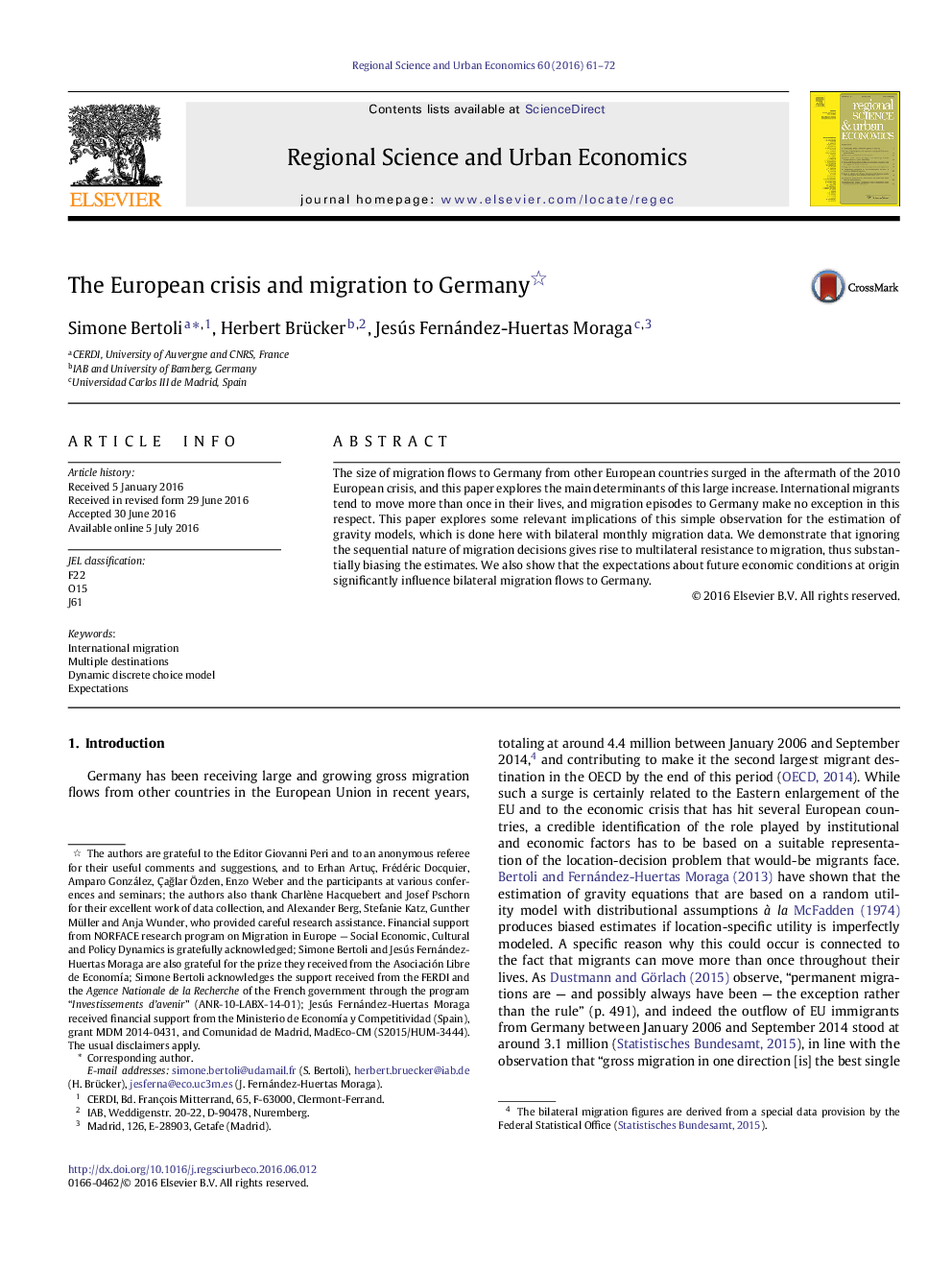| Article ID | Journal | Published Year | Pages | File Type |
|---|---|---|---|---|
| 983629 | Regional Science and Urban Economics | 2016 | 12 Pages |
•Germany became the second-largest migrant destination in the OECD by 2014.•We analyze the determinants of the surge in migration from European countries to Germany.•Migration is predominantly temporary in nature.•We explore the implications of this for the estimation of gravity models.•Expectations on future economic conditions significantly affect migration flows.
The size of migration flows to Germany from other European countries surged in the aftermath of the 2010 European crisis, and this paper explores the main determinants of this large increase. International migrants tend to move more than once in their lives, and migration episodes to Germany make no exception in this respect. This paper explores some relevant implications of this simple observation for the estimation of gravity models, which is done here with bilateral monthly migration data. We demonstrate that ignoring the sequential nature of migration decisions gives rise to multilateral resistance to migration, thus substantially biasing the estimates. We also show that the expectations about future economic conditions at origin significantly influence bilateral migration flows to Germany.
